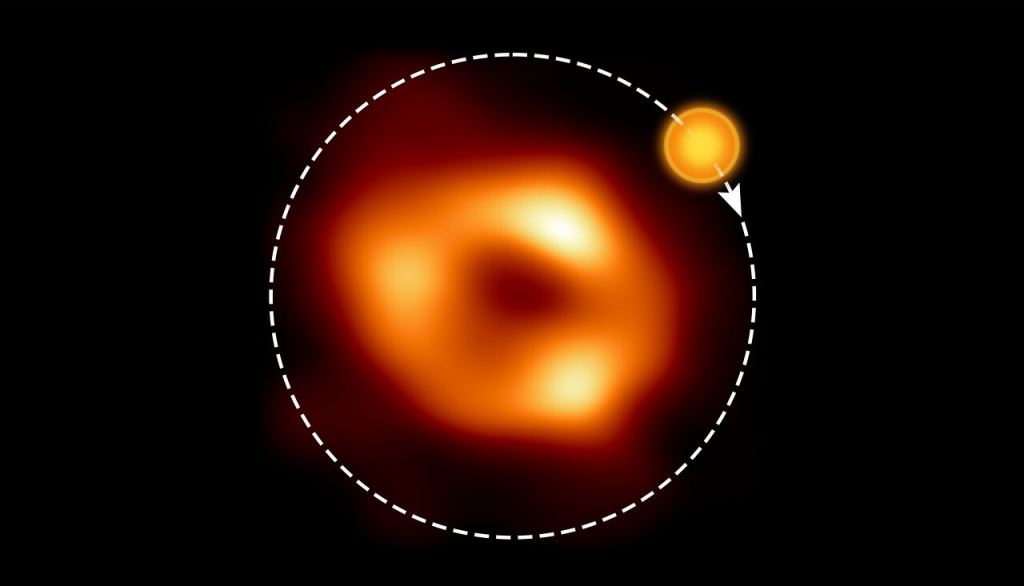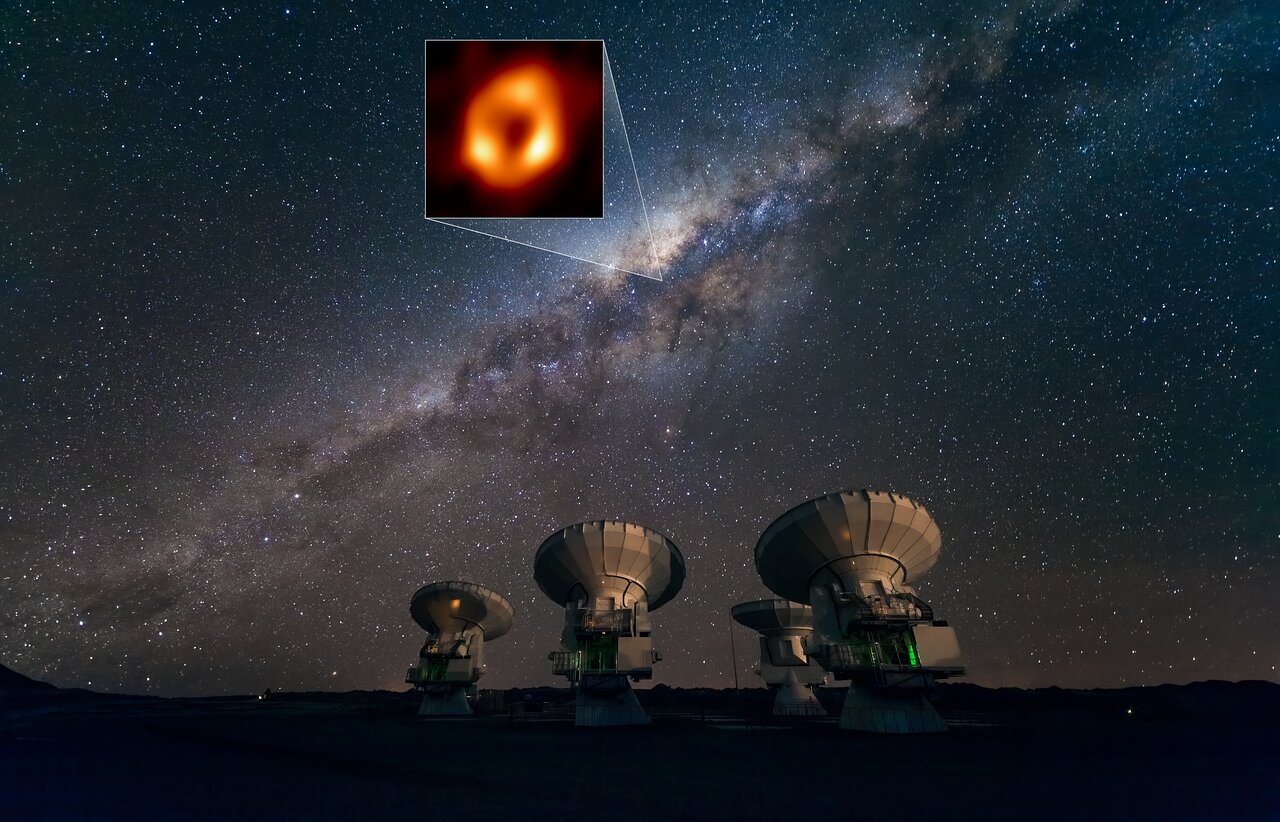Sagittarius A* (Sag A) is usually a pretty quiet object, as supermassive black holes go. It’s not wildly active, like the object at the heart of M87, for example. But, every once in a while, there’s a little action in its neighborhood. Right now, there appears to be a hot blob of gas running rapidly in circles around the black hole. Astronomers detected it using the Atacama Large Millimeter Array (ALMA) in Chile. The data from that radio astronomy facility tells them more about the environment around Sag A*.
What’s the hot spot made of? And, how fast is it moving? “We think we’re looking at a hot bubble of gas zipping around Sagittarius A* on an orbit similar in size to that of the planet Mercury,” said Maciek Wielgus of the Max Planck Institute for Radio Astronomy in Bonn, Germany, who led the study of the bright region, “but it’s making a full loop in just around 70 minutes. This requires a mind-blowing velocity of about 30% of the speed of light!”
Astronomers suspected the flares from the gas blob were caused by magnetic interactions in the superheated gas surrounding Sag A*. The ALMA observations support this idea. In addition, the data provide clues about the geometry of the black hole’s magnetic field.
Tracking the Blob of Gas

The superheated gas blob is moving clockwise around the black hole, with the orbit face-on to Earth. ALMA observed it not long after the Chandra Space Telescope measured a burst of x-ray energy coming from the same region. ALMA observations actually focused on polarized radio emission from Sagittarius A. That is used to track the extent of the black hole’s magnetic field. The data, coupled with theoretical models, will give clues to how the hot spot formed and what kind of conditions it experiences as it orbits. The results help astronomers understand more about the shape of the local magnetic field. That, in turn, gives some insight into the nature of Sag A and its surroundings.
The ALMA and Chandra observations weren’t the first telescopes have spotted the blob. The GRAVITY instrument at the Very Large Telescope also measured this same region, but in infrared light. The data from GRAVITY and ALMA both confirm that the flare originates in a clump of gas swirling around the black hole.
The Value of a Multi-Messenger View
Spotting the same region in a range of frequencies is actually very useful. This is because each “regime” of the electromagnetic spectrum focuses on a specific set of temperatures, motions, and events at a specific object. X-rays measure hotter and more energetic activities, while infrared ‘sees’ things as they cool down. Radio frequencies allow scientists to use polarized light to measure the magnetic field that the flaring blob of gas encounters.
“What is really new and interesting is that such flares were so far only clearly present in x-ray and infrared observations of Sagittarius A*. Here we see for the first time a very strong indication that orbiting hot spots are also present in radio observations,” said Wiegus. Other team members also pointed out further advantages of multi-wavelength observations of the flare.
“Perhaps these hot spots detected at infrared wavelengths are a manifestation of the same physical phenomenon: as infrared-emitting hot spots cool down, they become visible at longer wavelengths, like the ones observed by ALMA and the EHT,” said Jesse Vos, a Ph.D. student at Radboud University, the Netherlands, who was also involved in this study.
For More Information
Astronomers Detect Hot Gas Bubble Swirling Around the Milky Way’s Supermassive Black Hole
Orbital motion near Sagittarius A* – Constraints from polarimetric ALMA observations

